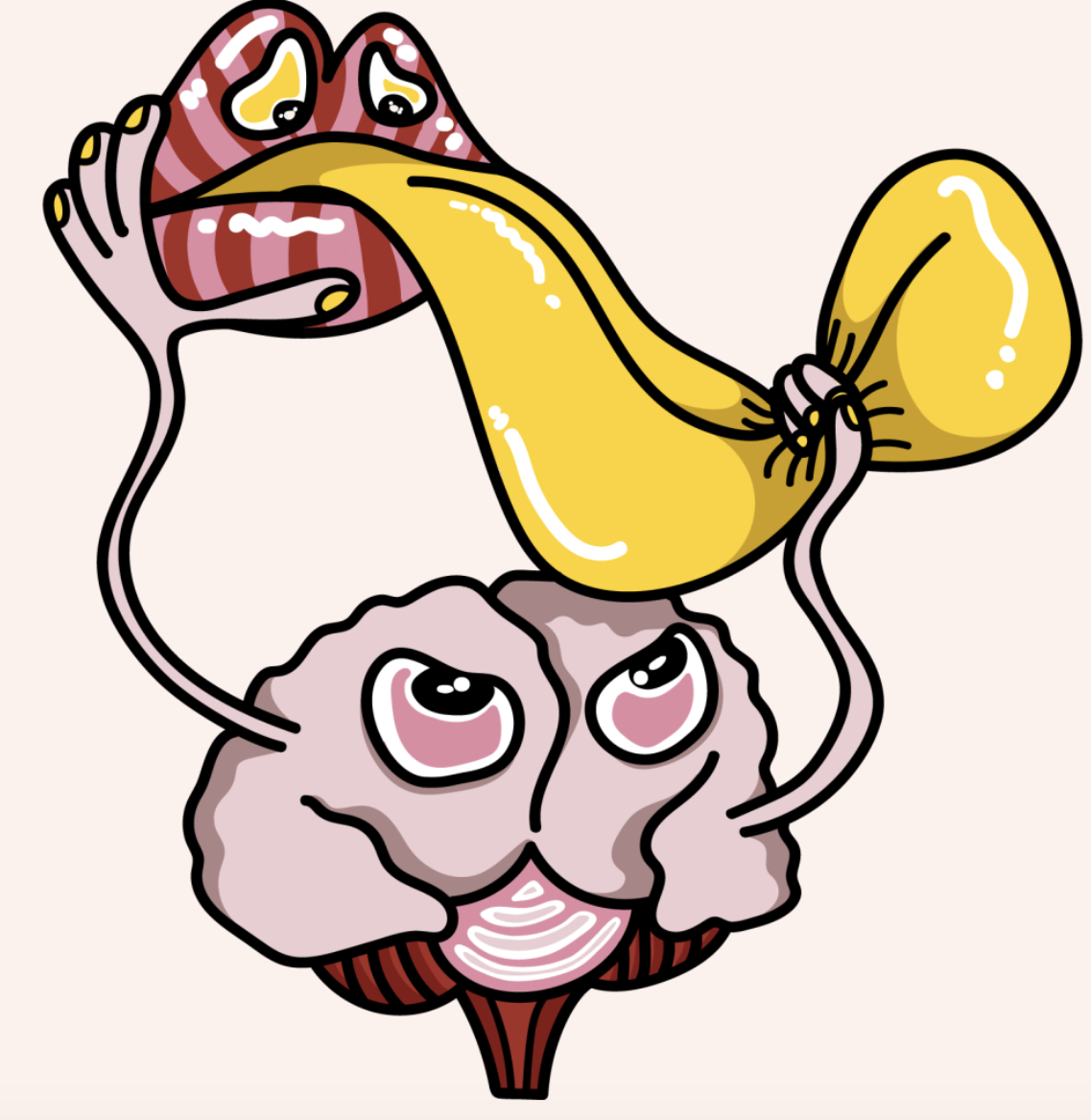Artwork from the Print edition by Aleksandra Wilk.
This article was originally published in the Oxford Scientist’s Print edition, Barriers, in Michaelmas Term 2022. You can read more of our Print articles here.
“She sells seashells by the seashore” is a common phrase thrown around classrooms, through which children find amusement in each other’s mistakes. Children and adults alike find these so-called “tongue twisters” frustratingly difficult to articulate. Researchers have steadily investigated speech and language errors to determine what it is that acts as a barrier between us and tongue twister fluency.
It is a common belief that tongue twisters, as the name implies, cause the tongue to fumble physically over repeated alternations between similar phonemes, the smallest units of sound that distinguish between different words. In “she sells seashells by the seashore”, s sounds rapidly alternate with sh sounds, involving a back-and-forth switch between the tongue touching the back of the bottom teeth and lifting to the middle of the mouth. Nevertheless, this is not necessarily the issue. It has been found that there exists a visual tongue twister effect, where individuals take longer to silently read sentences with the characteristics of tongue twisters, than regular sentences. As silent reading does not involve any movement of the tongue, this implies that the barrier lies earlier on in the process of language production.
Another possible reason is related to the vocal cords in the larynx, involved in both speech production and subvocalization, the silent, internal speech made when reading. The vocal cords may struggle with the switch between configurations associated with similar phonemes in tongue twisters. Certain sounds may get mixed up if they use similar parts of the vocal tract. For example, the vocal folds for vowel sounds are close together and vibrating, as well as for voiced consonant sounds, such as b, d and g.
Be that as it may, other speech errors occur in predictable ways that do not follow this premise. “Spoonerisms”—named after William Archibald Spooner of New College, Oxford, who was known for his verbal fumbles—are errors following the transposition of the initial sounds of two words. These involve interchanging two consonants (such as belly jeans instead of jellybeans) or two vowels (such as kinkering kongs instead of conquering kings), but hardly ever a consonant and a vowel. Under this line of reason, it is unlikely that the vocal tract alone stops us from saying tongue twisters fluently.
Key insights have come from the brain. A 2013 study by Kristofer Bouchard and colleagues collected neuronal data from three epilepsy patients who, as part of the treatment process, had electrodes implanted in their brains. Bouchard et al. looked at the patterns of electrical activity corresponding with participants’ vocalisation of different syllables. They found that the neuronal firing patterns for consonants varied from that of vowels, justifying the consistency of spoonerisms.
Furthermore, they noted that the brain categorises phonemes based on the muscle movements generally required to pronounce them, as opposed to their sounds. Consonants were categorised as “front-of-the-tongue sounds” (s, th, l), “back-of-the-tongue sounds” (g, k), and “lip sounds” (m, p, b), whilst vowels were divided into sounds that require rounded lips (oo, u), and sounds that do not (aa, ee, i). ‘This implies that tongue twisters are hard because the representations in the brain greatly overlap’, Edward Chang, one of the authors, told Nature. This may explain why in “she sells seashells by the seashore”, the sounds of s and sh get mixed up: they are both front-of-the-tongue sounds, and have shared neural representations.
While the current body of evidence points towards the brain as a barrier to tongue twister fluency, further research is necessary to determine definitively how other parts of the language system come into play; tongue, vocal tract, brain, and other articulatory regions are highly interconnected, and delving into their interactive effects will prove insightful. This line of research could be key in better understanding speech impediments and aiding effective communication. Indeed, determining the causes of linguistic and speech errors can direct us towards improving interventions to enhance fluency, and tongue twisters act as a useful stimulus to experimentally induce errors to investigate.





